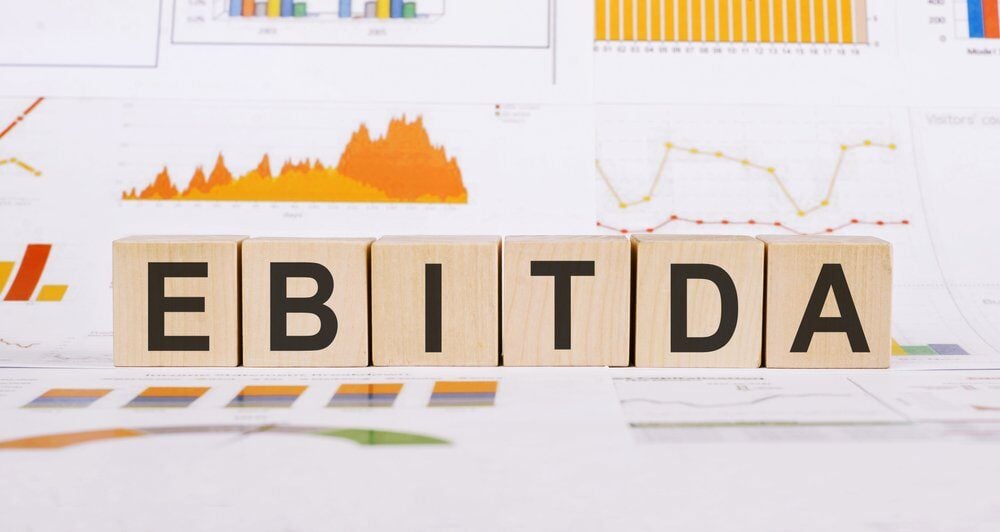
EBITDA stands for Earnings Before Interest, Taxes, Depreciation, and Amortisation. It's an important financial metric that accountants, finance teams and investors use to measure a company's operating profitability.
EBITDA adds interest, taxes, depreciation, and amortisation back to a company's net income. It is helpful because it provides a more comprehensive view of a company's operating performance, as it excludes non-operating expenses and non-cash expenses.
How to calculate EBITDA
To calculate EBITDA, you must start with net income, which is the bottom-line income figure after all expenses and taxes have been deducted. From there, you must add back interest, income taxes, depreciation, and amortisation expenses.
This might look like the following example:
- Net Income: £100,000
- Interest Expense: £20,000
- Income Taxes: £30,000
- Depreciation Expense: £15,000
- Amortisation Expense: £5,000
EBITDA Calculation Example
- £100,000 (Net Income) + £20,000 (Interest) + £30,000 (Taxes) + £15,000 (Depreciation) + £5,000 (Amortisation) = £170,000
In this illustrative example, the company's EBITDA is £170,000.
Why is EBITDA important?
EBITDA is an essential tool for analysing a company's financial performance. It focuses on a company’s core operations, making it very useful when comparing companies operating within the same industry.
EBITDA is not affected by a company’s capital structure (debt vs equity), which allows for a more direct comparison of companies - This is important because it means two companies with identical operating performance, but different debt levels can be compared more reasonably using EBITDA.
What is an EBITDA margin?
A company’s EBITDA margin expresses its EBITDA as a percentage of its total revenue.
This is important because it enables direct profitability comparison across industries and companies, regardless of their size or capital structure.
EBITDA Margin Calculation Example
- Total Revenue: £1,000,000
- EBITDA: £200,000
To calculate the EBITDA margin, we use the formula:
EBITDA Margin = (EBITDA / Total Revenue) * 100
When plugging in the numbers, this makes:
EBITDA Margin = (£200,000 / £1,000,000) * 100 = 20%
For this example, the company’s EBITDA margin is 20%.
A higher EBITDA margin generally indicates a more profitable company, but many other factors must also be considered when evaluating profitability.
What is Adjusted EBITDA?
As the term suggests, adjusted (or normalised) EBITDA is a modified version of the EBITDA metric that excludes certain one-off/non-recurring/exceptional items when their inclusion could distort the company’s underlying financial performance.
This could include things like legal settlements, costs associated with insurance claims, restructuring charges, or gains/losses from major asset sales.
Other more common examples may include grant income, non-business-related personal expenditure, normalised director’s remuneration, bad debt charges, and charitable donations.
By removing these items, Adjusted EBITDA aims to provide a more "normalised" view of a company's underlying operating profitability.
Adjusted EBITDA Calculation Example
The core formula for Adjusted EBITDA is:
Adjusted EBITDA = EBITDA + Adjustments
For this example, we’ll look at a company with the following:
- Operating Income: £200,000
- Depreciation: £30,000
- Amortisation: £10,000
- Restructuring Costs: £25,000 (one-time expense)
- Gain on Asset Sale: £15,000 (one-time gain)
The adjusted EBITDA, therefore, will be calculated as follows:
- EBITDA = Operating Income (£200,000) + Depreciation (£30,000) + Amortisation (£10,000) = £240,000
- Add back restructuring costs (non-recurring expense): £240,000 + £25,000 = £265,000
- Subtract gain on asset sale (non-recurring gain): £265,000 - £15,000 = £250,000
In this example, the restructuring costs were added back, and the gain on asset sale was subtracted from the EBITDA to arrive at the adjusted EBITDA.
This example is simplistic version of Adjusted EBITDA; in reality, an Adjusted EBITDA calculation may include many more/different items.
EBITDA vs EBIT
Earnings before interest and taxes (“EBIT”) is another metric often used by companies to measure operating profitability (This can also be known as Operating Profit). It is calculated much in the same way as EBITDA, however depreciation and amortisation are not added back to the net profit.
This may be used where EBITDA does not fairly reflect the company’s ability to generate profits, as it introduces some of the costs of capital investment.
For example, an asset intensive business would have a vastly different EBITDA and EBIT, due to depreciation.

Connor Marshall
I am a Corporate Finance Manager at Shorts, having joined the firm in 2021 as a Corporate Finance Executive. With a Master’s in Finance and Investment from Sheffield Hallam University, I have over six years’ experience working on a wide range of transactions, including MBOs/MBIs, EOTs, trade sales, fundraisings, and valuations, across sectors such as waste, recruitment, and engineering. Notable recent deals include Abbeydale Brewery’s sale to an EOT, Armeg’s sale to an EOT, and the MBO of Apex Consulting Engineers.
View my articlesTags: Corporate Finance
